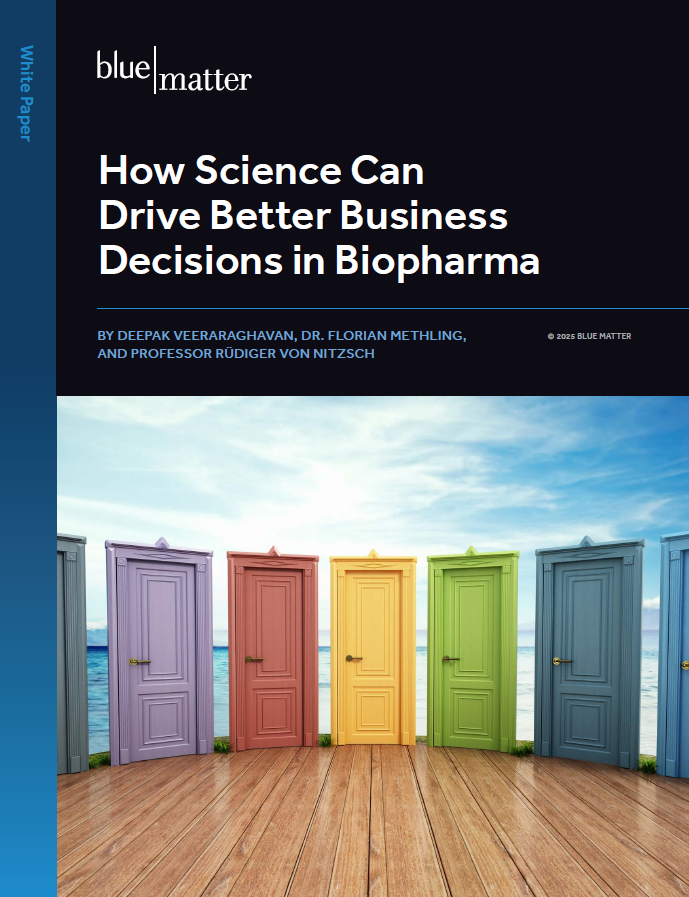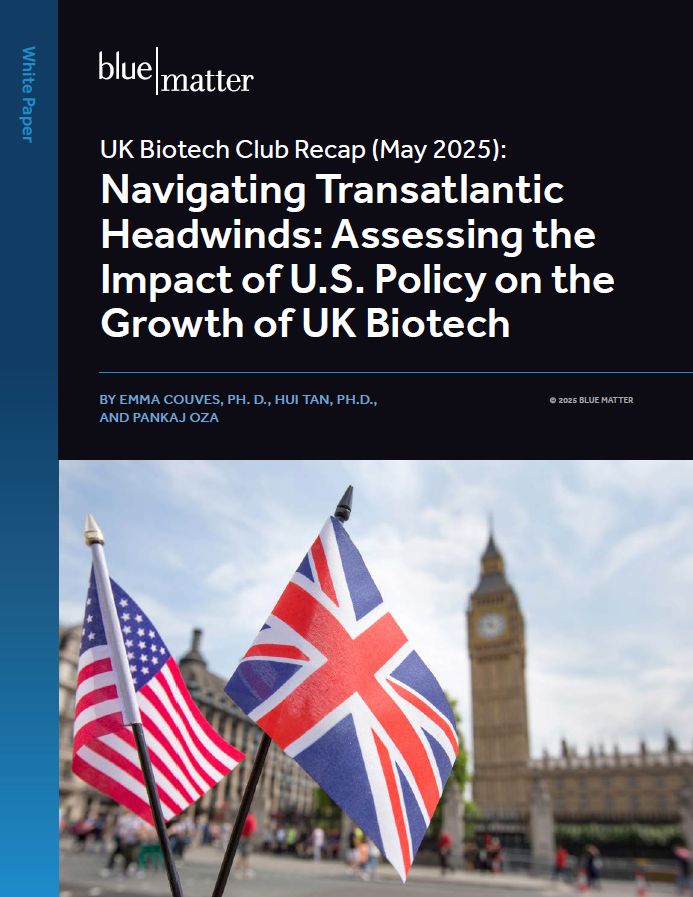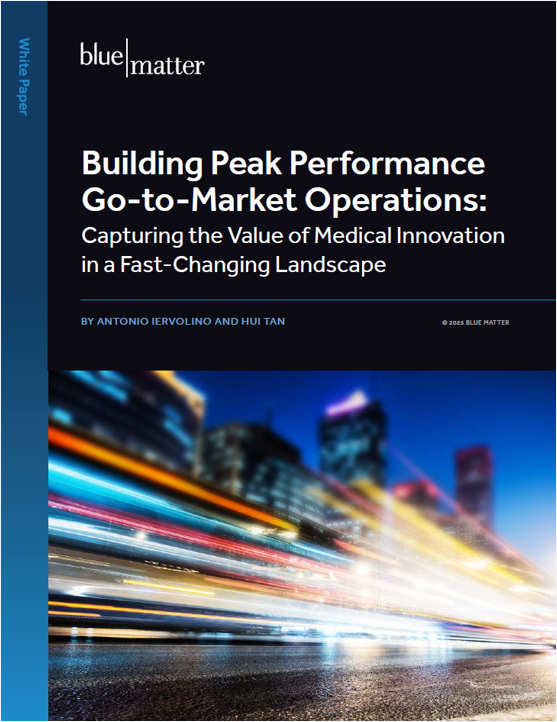
When entering European markets, a biopharma company must do a range of important things, many of which we will address throughout this series. In this installment, we cover two foundational elements of any European market entry that can set the commercial playing field for years to come. They are 1.) Securing intellectual property (IP) protection and 2.) Completing the necessary regulatory filings.
Without a clear strategic approach to doing these things, a company risks long-term negative consequences that could limit its ability to achieve its full commercial potential. Securing European IP protection and managing regulatory filings are critical, meticulous, and process driven exercises. Therefore, any company embarking on a European market entry should have the necessary legal and regulatory expertise in-house or should secure outsourced partners who do.
A comprehensive overview of this process is far beyond the scope of any single article. Rather, our objective here is to link the key steps for IP protection and regulatory filings to their potential downstream commercial implications, while providing some recommendations that biopharma companies can use to approach this process more strategically. The key objectives for a strategic approach are to
- Prolong exclusivity
- Expedite clinical development and review timelines
- Optimize pricing
A High-Level Look at Key Filings
IP Protection
Independent of what path a company takes (i.e. “early exit”, out-licensing, partnering, or self-commercialization), the strengths and durations of its patents will significantly affect its valuation and its long-term commercialization opportunity. There are a number of different filings related to IP, including product-related patents, filings related to data exclusivity and market protection, trademarks and design rights, and copyrights. Collectively, these filings protect the rights to the asset itself as well as the tools that will be used to commercialize it.
Companies planning to enter European markets should make themselves aware of the various filings and mechanisms that may be available to them including:
- Patent protection: As most people in the biopharma industry are aware, product patents usually grant 20 years of exclusive rights and exclude others from producing, using, and selling generic versions. However, there are a range of measures that companies can take—under certain circumstances—to extend that protection as mentioned below.
- Supplementary protection certificates (SPCs): SPCs can extend the patent terms of pharmaceutical products that have been authorized by regulatory authorities by five years. An additional six-months can be granted if data are submitted according to a Paediatric Investigation Plan (PIP) that support the authorization for children.
- Data exclusivity and market protection: Both filings give an additional shield in case patent timelines are about to expire when the invention reaches regulatory authorization.
- Authorized products may benefit from eight years of data exclusivity, which is the time until generics and biosimilars can start to apply. Exclusivity can be extended by one year if significant pre-clinical or clinical data are provided that would change the drug classification or would support a new therapeutic indication.
- Market protection can be granted for ten years, which is the time until a generic or biosimilar can be placed on the market. This period can be extended by one year if within eight years the company manages to obtain an authorization for one or more new therapeutic indications.
Product patents are not the only important IP-related filings. Trademarks, design rights, and copyrights are also important to secure a product’s brand identity. Applications should start early, well before market authorization.
Regulatory Filings
Regulatory filing across the European Union’s 28 (as of this writing) member states is synchronized by the EMA (European Medicines Agency). The agency’s Committee for Medicinal Products for Human Use (CHMP) will grant a market authorization (MA) for all 28 EU-member countries. The legally binding decision (a rather formal procedure) will be then issued by the European Commission. This centralized approach is mandatory for some products, including cancer medications, HIV/AIDS treatments, viral diseases, autoimmune disorders, and some others.
There are alternative approaches to securing market approval. For some companies, one of the alternatives below could make sense if the product is right, one or a few markets are critically important, or if strategic timing requirements dictate:
- National Procedure – Apply to the proper agency in a single EU state.
- Mutual Recognition – After securing approval in a single state, marketing authorization in another EU member state can be obtained through mutual recognition.
- Decentralized Approach – Apply for marketing approval in a range of EU states simultaneously by appointing one reference member state.
A sound dossier submission is critical to any of the approaches above. The work involved in creating a powerful—and ultimately successful—dossier submission starts long before pivotal trials begin, and a strategic approach is needed to avoid delays while maximizing the value of the asset.
Also, some treatments are for diseases in which there are extremely limited therapeutic options and a high unmet need. In a case like that, a company may be able to get the treatment to some patients early via compassionate use programs.
Once market approval is secured, a company will face individual member states’ requirements for the commercialization and distribution of pharmaceutical products. Most notably, these include Manufacturing and Importation Authorizations (MIA) and Wholesale Distribution Authorizations (WDA) or Licenses (WDL). These and other requirements will be more thoroughly addressed in future installments.
Key Considerations and Recommendations
Start Early and Be Strategic
Given the complex nature of this “high-stakes” process, it is critical to adopt a strategic and systematic approach. Starting very early (prior to phase II of clinical development), a company should:
- Identify all required filings and their timings.
- Identify the key institutions related to those filings and from whom input is needed.
- Assign responsibility for strategic and operational oversight of the process.
- Identify the information / stakeholder inputs needed for each filing.
- Build a target list of critical stakeholders from whom input is needed.
- Create a stakeholder engagement plan and assign responsibility for carrying it out.
Proactively Gather Input from the EMA and Other Stakeholders
A company must ensure that its dossier will be as effective as possible in helping to secure a market authorization. In most cases, this means proactively engaging with the EMA and other stakeholders early, well before the design of pivotal trials if possible. Input and advice are available in a range of areas, including
- The most relevant trial endpoints
- The most appropriate comparators (i.e., current and/or future standard(s) of care)
- Whether the product may qualify for orphan status and/or accelerated assessment
- How best to demonstrate the product’s economic value
This will help ensure that clinical studies gather data that are most relevant to regulatory authorities, payers, and more. Overall, it will enable the company to secure a label that’s more likely to support commercial success.
Incidentally, if the company decides not to engage with the EMA for strategic reasons, then it should establish a mock EMA panel of former regulators, rapporteurs, and co-rapporteurs. They can provide similar guidance in a lower-risk environment. Below, we outline some of the advice that companies can get from the EMA / CHMP and other stakeholders.
Scientific Advice
During a medicine’s development process, a company can seek guidance from the EMA on the best study designs for generating robust and relevant data on safety and efficacy. Gathering this input can help improve study design, avoid challenges during the evaluation process, and prevent patients from taking part in studies that won’t produce the most useful evidence. This scientific advice and protocol assistance are given by the CHMP Scientific Advice Working Party (SAWP).
Advice Regarding Evidence Generation
In conjunction with the European Network for Health Technology Assessment (EUnetHTA), the EMA offers consultations on evidence generation plans. This allows biopharma companies to get feedback from regulators and HTA bodies on their evidence-generation plans to support decision-making on marketing authorization, as well as reimbursement. These consultations can take place at any time, before or after the product is made available on the market. However, it’s definitely preferable to secure such input as early as possible. This initiative streamlines the previous process, in which companies had to contact member states’ HTA bodies individually.
Advice Regarding Accelerated Assessment
If the CHMP determines that a product is highly important to public health—and represents a significant therapeutic innovation—then it might deem the product’s application eligible for accelerated assessment. This reduces the timeframe for the CHMP to review the application and render a decision.
Under a centralized procedure, the CHMP can take up to 210 days to evaluate a marketing-authorization application. With accelerated assessment, that timeline can be reduced to 150 days, as long as the applicant provides sufficient justification. The EMA strongly recommends that applicants request a meeting six to seven months before submitting an application. During this meeting, the company can outline its proposal for accelerated assessment with the EMA, rapporteurs from the CHMP, and any other relevant committees.
Reimbursement-Related Advice
A company should also engage with key payers early, discussing many of the same topics as with the EMA. The company can begin to collect payer input, then incorporate it into clinical trial design, use it to inform development of the target product profile (TPP), and leverage it when developing sound payer value propositions.
Consider Other Levers
There are some other levers that companies may be able to use to accelerate assessment, extend patent protection, etc. These are not applicable in all cases but are definitely worth exploring.
PRIME (Priority Medicines)
PRIME was launched by the EMA to improve support for medicines that target unmet medical needs. To be accepted for PRIME, a medicine must—through early clinical data—show the potential to provide a major therapeutic advantage over existing treatments (or benefit patients who have no current options).
Through PRIME, the EMA offers early and proactive support to companies. This support is very similar to the types of input and advice described above. Medicines that are part of PRIME can expect to be eligible for accelerated assessment of their marketing authorization applications.
Orphan Status
As is commonly known, orphan drugs are intended to treat diseases that are quite rare—so rare that the resultant market size for the product makes it less commercially attractive for the developer. In the EU, special incentives are offered for medicines with orphan status. Broadly speaking, the EU requirements for orphan status are as follows:
- The medicine must address a disease that is life-threatening or chronically debilitating
- The prevalence of the condition in the EU must typically be 5 in 10,000 (or lower)
- There must be no satisfactory therapeutic alternatives (or if there are, the prospective medicine must potentially show a significant benefit over them)
The incentives for orphan medicines take many forms. Below is a brief overview.
- Protocol Assistance
- Additional / Guaranteed Market Exclusivity (ten years, once approved, plus two additional years for medicines that have an agreed-upon pediatric investigation plan)
- Access to the Centralized Authorization Procedure and fee reductions
Tips for Engaging with Regulators
Prepare Diligently
A company should prepare diligently for any interaction with the EMA, whether it’s before or during the dossier review period. It’s often advisable to prepare for meetings with a mock panel consisting of ex-regulatory authorities.
It’s critical to have clear objectives and a game plan for each interaction. In part, the team needs to answer a range of questions as it prepares for a meeting with the EMA or other crucial stakeholder: What are the real questions that we need to have answered? What do we want out of the meeting? What messages do we need to communicate? What questions are we likely to get and what information should we have on hand to answer them?
Maintain Relationships
Throughout the process, maintain relationships with the EMA and other stakeholders. As mentioned above, it pays to engage early. This need to engage extends all the way through the dossier submission process and beyond.
It also extends beyond EMA personnel. For example, the EMA will appoint suitable KOLs to review the dossier submission (rapporteur and co-rapporteur). The company will not know in advance who these people are likely to be. However, a survey of the KOL environment early on will identify the most likely candidates. The company should identify these candidates early and engage with them to discuss the therapy, get their advice, and establish a relationship. After the rapporteur and co-rapporteur are appointed, the company’s access to them will be highly controlled, and relationship-building will become far more challenging.
Consider Leveraging Parallel FDA and EMA Processes
If appropriate, align the US Food and Drug Administration (FDA) and EMA submission processes as much as possible. This can help the company avoid rework and save time.
The EMA and the FDA have launched a pilot program to provide parallel scientific advice regarding protocol development and a range of other issues. The goal is to provide a way for EMA and FDA assessors and drug developers to interact during product development, avoid unnecessary testing and rework, prevent the use of unnecessarily divergent testing methodologies, and generally improve scientific understanding.
Focus On Your Key Messages and Product Value
After submitting the product dossier to the EMA, the clock begins ticking on a number of key milestones in the review process. On Day 120, the EMA will produce a list of questions, asking for additional information it needs to continue its review. On Day 180, the EMA will produce a final list of outstanding issues that still require further explanation.
During this time, the company must respond to these issues and questions completely and appropriately. Throughout this phase of the process, pressure test the product’s TPP against the questions that come back from the EMA. Identify risks, determine the potential impacts on the product’s label and value, and prepare responses diligently.
It’s critical to set up a competent team with deep knowledge of the filing dossier to handle these interactions. Most likely, this team would be cross-functional and set up like a rapid-response unit. Again, using a mock panel can be very helpful in getting the team ready for those important interactions with the EMA.
Conclusion
Obviously, it’s impossible in a 2,500-word article to fully cover the intricacies of all the varied filings and submissions that are required to get a new product off the ground. However, we hope to have given the reader a sense of the filings that are necessary, the importance of a systematic and strategic approach, the need for relationship building, and an idea of the special options and considerations that might be available.
Securing product approval in Europe is a complex undertaking. Any company making a move into European markets needs to be aware of the playing field and have a solid game plan before starting.







